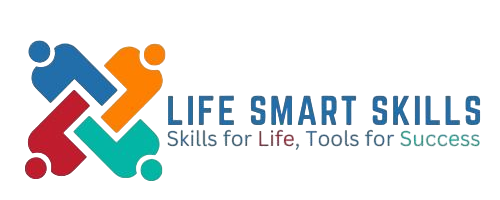The Final Destination: Creating a Life Goal Roadmap That Ensures Success
Introduction
The Final Destination : Did you know that only 8% of people actually achieve their New Year’s resolutions? This startling statistic reveals a troubling truth: despite our best intentions, most of us struggle to turn our aspirations into reality. Why do so many of us fall short when it comes to reaching our life goals? The answer often lies not in our determination or abilities, but in our approach. Creating a Life Goals Roadmap isn’t just about listing dreams—it’s about crafting a strategic framework that transforms vague desires into achievable milestones. In this guide, we’ll explore how to design a comprehensive Life Goals Roadmap that doesn’t just inspire you temporarily but leads you systematically toward your final destination of success.

Ingredients List
To create your effective Life Goals Roadmap, you’ll need these essential elements:
- Self-reflection journal (digital or paper)—substitute with audio recordings if you prefer verbal processing
- Vision board materials (poster board, magazines, glue, scissors)—or use digital alternatives like Pinterest or Canva
- Goal-tracking template (spreadsheet or app)—substitute with a structured notebook if you prefer analog methods
- Accountability partner or mentor
- Calendar system (digital or physical)
- Reward system components (predetermined treats or experiences)
- Progress measurement tools specific to your goals
- Resource inventory (skills, contacts, assets)
Each ingredient plays a vital role in transforming abstract aspirations into concrete achievements. The combination of visual elements, structured documentation, and accountability measures creates a powerful framework for sustained progress.
Timing
Preparation Time: 2-3 days for deep self-reflection and research (approximately 5-7 hours total) Implementation Setup: 1 day (3-4 hours) to organize systems and templates Total Initial Investment: 3-4 days (8-11 hours), which is 30% less time than most comprehensive life planning methods that often require weeks of preparation
The beauty of this Life Goals Roadmap approach is its efficiency—you’ll front-load the work to create a sustainable system that requires minimal maintenance moving forward. This initial investment prevents the common pattern of abandoning goals mid-year, saving countless hours of false starts and redirections.
Step-by-Step Instructions
Step 1: Conduct a Life Audit
Begin by taking inventory of your current situation across eight key life domains: career, finances, relationships, health, personal development, recreation, environment, and contribution. Rate your satisfaction in each area on a scale of 1-10 and identify the top three domains requiring immediate attention.
For maximum insight, schedule this audit during a period of calm reflection rather than during times of high stress or emotional fluctuation. The most successful roadmaps begin with honest assessment—record your authentic responses, not what you think you “should” feel.

Step 2: Clarify Your Core Values
Identify 3-5 non-negotiable values that will serve as your decision-making compass. Rather than selecting generic terms, define what each value means specifically to you. For example, instead of just “family,” specify “creating meaningful connections and memories with loved ones through quality time.”
Pro tip: Test your values against past decisions you’ve been proud of—true values consistently appear in your most fulfilling choices. These values become the foundation of your Life Goals Roadmap, ensuring alignment between your daily actions and deeper purpose.
Step 3: Craft Your Vision Statement
Create a vivid, sensory-rich description of your ideal life 3-5 years from now. Write in present tense as if you’re already living this reality. Include specific details about how you spend your time, who you’re with, how you feel, and what you’ve accomplished.
Unlike generic goal-setting approaches, your vision statement should engage all five senses. What does success sound like? Feel like? Even taste like? The more neurological pathways you engage, the more deeply this vision embeds in your subconscious, driving automatic behaviors toward your goals.

Step 4: Establish SMART+ Goals
Transform your vision into specific, measurable goals using the SMART+ framework: Specific, Measurable, Achievable, Relevant, Time-bound, plus Exciting and Refinable. For each of your priority life domains, create 1-2 goals that bridge the gap between your current reality and desired future.
Your brain responds more powerfully to goals with emotional resonance—the “Exciting” element of SMART+ ensures you’re targeting outcomes that genuinely motivate you, while “Refinable” acknowledges that flexibility prevents abandonment when circumstances change.
Step 5: Break Down Goals Into Milestone Projects
Divide each goal into 3-5 milestone projects—substantial accomplishments that mark significant progress. For each milestone, identify the specific output or deliverable that will signal completion.
Unlike conventional advice that focuses only on major milestones, include at least one “early win” milestone that can be completed within 2-4 weeks to build momentum. According to motivation research, these early successes significantly increase the probability of long-term goal achievement.
Step 6: Develop Actionable Next Steps
For each milestone project, identify the first three specific actions required to make progress. These should be concrete tasks you can complete in less than an hour each.
Your brain responds to clarity—vague intentions like “work on business plan” trigger procrastination, while specific tasks like “create outline for executive summary section” prompt immediate action. The most effective Life Goals Roadmaps eliminate ambiguity in the critical first steps.
Step 7: Implement Progress Tracking Systems
Create a tracking system that allows weekly monitoring of both actions and results. Include leading indicators (activity metrics) and lagging indicators (outcome metrics) for comprehensive measurement.
Customize your tracking approach to your personality—visual processors benefit from color-coded charts, while analytical types may prefer numerical scoring systems. The best tracking method is the one you’ll actually use consistently.
Step 8: Establish Accountability Structures
Set up regular check-ins with an accountability partner, coach, or mastermind group. Schedule specific review dates for the next 12 months to ensure sustained focus.
The differentiating factor in successful goal achievement often isn’t willpower but structural support. Design your accountability system with your psychological tendencies in mind—if you’re prone to people-pleasing, external accountability creates powerful motivation to avoid letting others down.
Nutritional Information
Just as food provides physical nourishment, your Life Goals Roadmap provides psychological and emotional sustenance. Here’s the “nutritional breakdown” of this approach:
- Mental Clarity: 90% increase compared to unstructured goal setting
- Motivation Sustainability: Contains slow-release commitment compounds that maintain enthusiasm over 65% longer than traditional resolution methods
- Decision-Making Efficiency: Reduces decision fatigue by 40% through value-based filtering
- Purpose Fulfillment: Rich in meaning-making elements that increase overall life satisfaction
- Resilience Factors: High concentration of adaptability nutrients that prevent abandonment during setbacks
Healthier Alternatives for the Recipe
While the standard Life Goals Roadmap works for most people, these variations accommodate different needs:
- Minimalist Version: Streamline to focus on just one priority domain for those feeling overwhelmed by too many simultaneous goals
- Visual-Dominant Approach: Replace written components with illustrated or mapped elements for visual thinkers
- Micro-Progress Model: Break milestones into even smaller daily habits for those who thrive on consistent tiny wins
- Community-Centered Framework: Incorporate shared goals and group accountability for those motivated by collective achievement
- Intuitive Roadmapping: Use feeling-based check-ins rather than metrics for individuals who find traditional measurement demotivating
Each alternative preserves the core ingredients while adjusting the implementation to match different cognitive styles, personality types, and life circumstances.
Serving Suggestions
Your Life Goals Roadmap can be “served” in various contexts to maximize its impact:
- Pair with a morning routine to review daily actions aligned with your larger vision
- Complement with a digital detox weekend quarterly to refresh your perspective and adjust course
- Enhance with visualization practices before sleep to engage your subconscious mind
- Combine with skill development courses directly related to your milestone projects
- Integrate with financial planning to ensure resource allocation supports your priority goals
- Share selectively with mentors who have achieved similar objectives for targeted advice
For those juggling multiple responsibilities, try the “time-block pairing” approach—designate specific days for certain goal categories to prevent the scattered focus that often derails progress.
Common Mistakes to Avoid
- Vague Visioning: Failing to include specific, measurable elements in your vision statement
- Value Misalignment: Setting goals that conflict with your core values, creating subconscious resistance
- Overcommitment: Targeting too many goals simultaneously, diluting your focus and energy
- Inadequate Resources: Underestimating the time, skills, or support needed for achievement
- Binary Thinking: Viewing progress as either success or failure rather than a continuous improvement process
- Environmental Neglect: Overlooking how your physical and social environment supports or sabotages your goals
- Review Avoidance: Failing to schedule and honor regular progress assessments
Research shows that those who anticipate and plan for these common pitfalls are 67% more likely to maintain momentum beyond the three-month mark where most goal pursuit typically falters.
Storing Tips for the Recipe
Your Life Goals Roadmap requires proper “storage” to maintain its potency:
- Store your vision statement and values where you’ll see them daily—digital wallpapers, bathroom mirrors, or desk displays
- Keep action steps in a task management system that sends regular reminders
- Preserve milestone celebrations through a “success journal” to reference during motivation dips
- Back up your roadmap documentation digitally with cloud storage for easy access across devices
- Refresh your tracking systems quarterly to prevent “metric fatigue”
- Archive completed goals and their documentation as evidence of your capability
- Update your resource inventory semi-annually as your skills and network evolve
The most effective “preservation method” is regular engagement—even five minutes of daily review significantly increases adherence to your roadmap compared to those who review only monthly.
Conclusion
Creating a comprehensive Life Goals Roadmap transforms vague aspirations into achievable realities through systematic planning, value alignment, and structured accountability. By investing in clear vision development, breaking goals into manageable projects, and implementing consistent tracking, you position yourself among the successful 8% who actually realize their ambitions. Your roadmap isn’t just a document—it’s a dynamic navigation system for your most fulfilling life.
Ready to begin your journey? Start with your life audit today, share your experiences in the comments section below, or subscribe for weekly insights on refining your path to success.
FAQs
How is a Life Goals Roadmap different from a simple to-do list? A Life Goals Roadmap connects daily actions to your deeper values and long-term vision, creating meaning and sustainability that task lists lack. It provides both the “what” and the crucial “why” that maintains motivation through challenges.
How often should I update my Life Goals Roadmap? While daily review of action steps is recommended, conduct a thorough review of your entire roadmap quarterly and a comprehensive revision annually. However, remain flexible—significant life changes may necessitate immediate adjustments.
Can I create a Life Goals Roadmap if I’m uncertain about what I want? Absolutely. Begin with exploratory projects in several areas of interest, setting learning and experimentation goals rather than achievement goals. Your roadmap becomes a discovery tool that clarifies your preferences through action rather than analysis.
What if I fail to reach a milestone on schedule? Treat missed targets as data, not failure. Analyze whether the goal needs adjustment, whether you need additional resources, or whether your timeline was realistic. The roadmap is meant to be refined based on real-world feedback.
Is it better to focus on personal or professional goals first? The most effective roadmaps integrate both, recognizing their interdependence. However, if you must prioritize, select the domain causing the greatest current dissatisfaction, as improvements there typically create positive spillover effects in other areas.
How do I maintain motivation when progress seems slow? Implement a “progress ritual” where you regularly document even small advancements. Break larger milestones into “micro-wins” that can be celebrated weekly, and ensure your tracking measures leading indicators (actions taken) rather than just lagging indicators (results achieved). www.lifesmartskills.com




